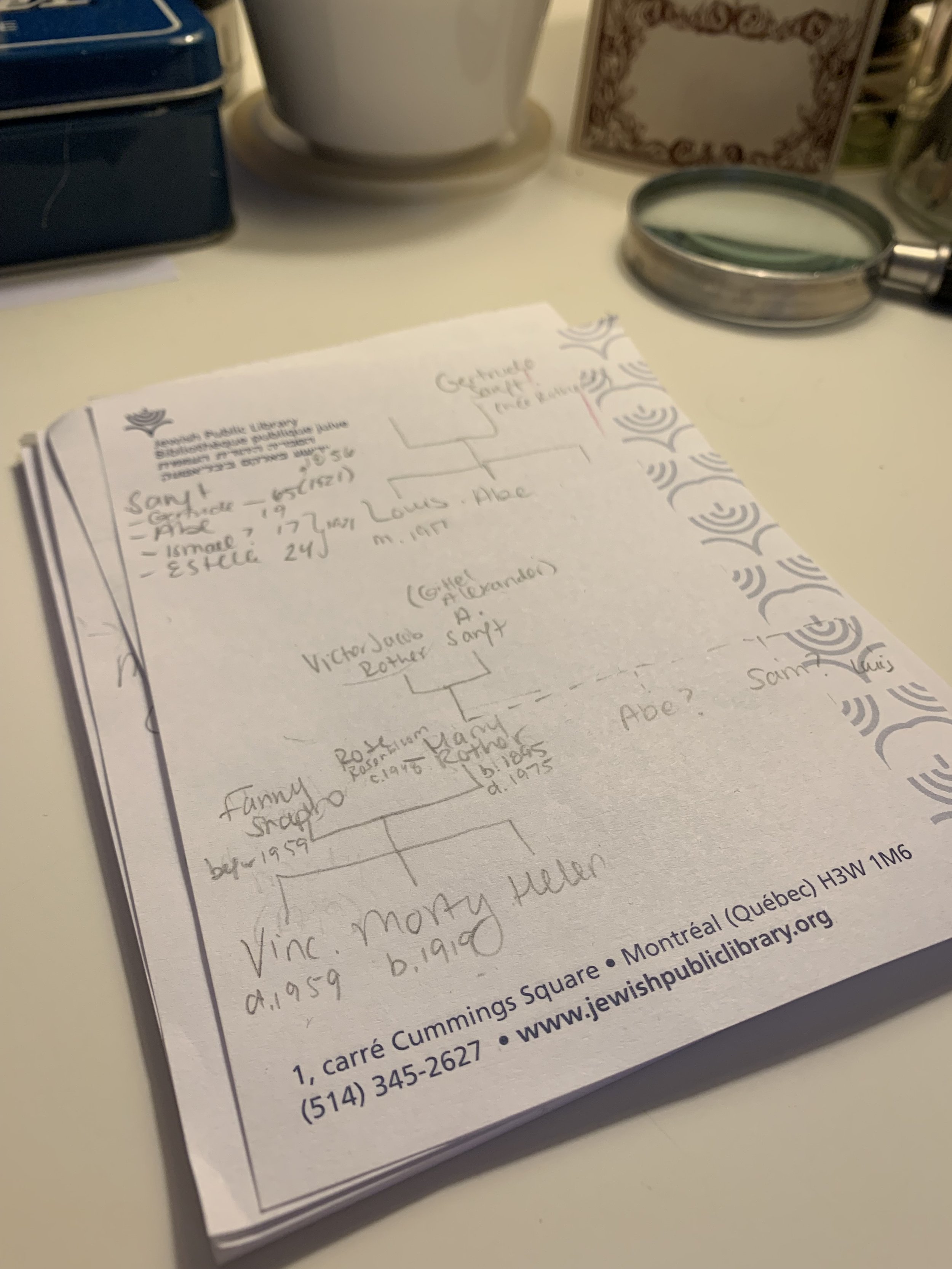A how-to for digital detective work
It’s been nearly three months since I stepped in as the interim Digital Archivist role at the JPL Archives, so now I am quite used to uncovering mysteries here . Let’s set the scene for a typical day—I've ventured into the stacks and pulled a container that hasn’t seen the light of day in a while. There’s a fonds number and a family name, so I head directly to our legacy database to find out more... only to find very little information.
This time round, I was migrating the Abraham Rother Fonds. Not only was the existing description quite sparse, but the biographical sketch was also incomplete and incorrect. There was a lot to update before migrating to our online catalogue, so where to begin?
Abraham Rother with family at the Passover Seder, 1945, ID: 1397
Step 1: Take a deep breath and browse the records
While it’s not ideal to discover a fonds with little-to-no description in our collection, it is often a reality of community archives. After a quick inhale and exhale, I begin by taking stock of the information on hand and noting down any names, subjects, or places. Is this a family fonds? Do we know who created the records or when? Is there an associated donor?
Step 2: Start researching!
With the information I’ve found about the fonds and its actors, I usually now turn to the web to see what more I can learn with the names, dates, locations, and subjects. Starting broadly on a search engine with name(s) and location, usually obituaries are discoverable this way and will have information on their life (including dates, hobbies, notable achievement).
If the information is still elusive, I turn to genealogy and newspaper databases. Public libraries (like ours) often have subscriptions to these services, like Ancestry.ca, to search vital, marriage, immigration, and census records.
Abraham Rother Fonds, Unidentified group photograph, ID: 1397
Step 3: Build a family tree
With any luck, at this point I’ve found more information than I had bargained for and need some way to organize this. When working with family fonds in particular, I find it very useful to map out a family tree relating to the actors in the fonds.
This not only helps visualize the various actors and their relationships with one another, but the records as well. Crucially, this also helps to contextualize the lives of the actors in a time and place. At this point, the fonds is no longer as mysterious as it once was.
Just one of many notepads filled with this research…
Step 4: Update the archival description
Finally, I combine all of the research into a biographical sketch for the main actors identified in the fonds. Now with the necessary context, it should be easier to finish any remaining arrangement!



